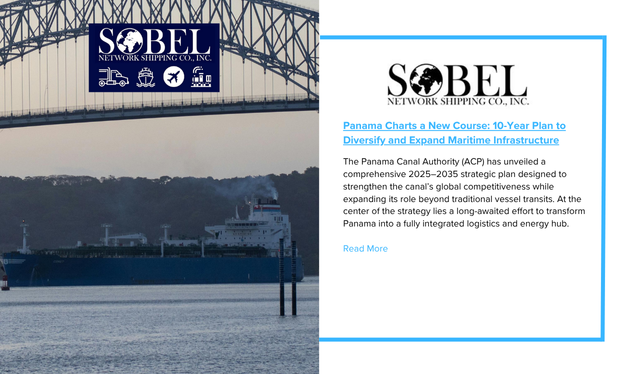The Panama Canal Authority (ACP) has unveiled a comprehensive 2025–2035 strategic plan designed to strengthen the canal’s global competitiveness while expanding its role beyond traditional vessel transits. At the center of the strategy lies a long-awaited effort to transform Panama into a fully integrated logistics and energy hub.
The plan’s two main pillars — securing long-term water resources and diversifying revenue streams — align with global shifts in shipping and energy trade. More than $8 billion in investments are planned across multiple projects, including the Río Indio Reservoir, an Interoceanic Energy Corridor connecting the Atlantic and Pacific coasts via a 76-kilometer pipeline, and the long-discussed Corozal Container Terminal, a project decades in the making.
Corozal Port Revival
The proposed Corozal terminal is emerging as the cornerstone of Panama’s maritime growth agenda. Initially introduced more than a decade ago but stalled by political and competitive challenges, the project is now regaining momentum under the current administration. Preparatory work is complete, and the ACP expects to move toward the contracting phase by early 2026, with construction slated to begin in 2028.
Designed for a capacity of up to 5 million TEUs, Corozal will serve as a key transshipment hub linking the Pacific with trade routes across South America, Central America, and the Caribbean. The government is revisiting concession terms to attract new global operators and address concerns that halted prior bidding rounds.
The renewed focus on Corozal comes amid heightened scrutiny of existing port concessions and ongoing shifts in global port ownership. Analysts suggest this could offer Panama leverage to negotiate more favorable terms that better align with national and commercial interests.
Expanding Beyond the Canal
In parallel, the ACP has begun market outreach for its Interoceanic Energy Corridor, designed to transport propane, butane, and ethane across the isthmus to meet rising global energy demand. The initiative — which drew participation from over 40 international energy firms — aims to reduce canal congestion while boosting Panama’s role in regional energy logistics.
The corridor’s pipeline system will feature dual maritime terminals and a throughput capacity of up to 2.5 million barrels per day. The concessionaire selection process is expected to conclude in late 2026 following three stages: prequalification, engagement, and final bidding.
A Shift in Maritime Strategy
The ACP’s new framework reflects Panama’s ambition to evolve from a transit-focused canal operator into a diversified trade and logistics powerhouse. With a focus on long-term sustainability, increased connectivity, and improved national returns, the decade ahead could redefine Panama’s role in global maritime and energy networks.


